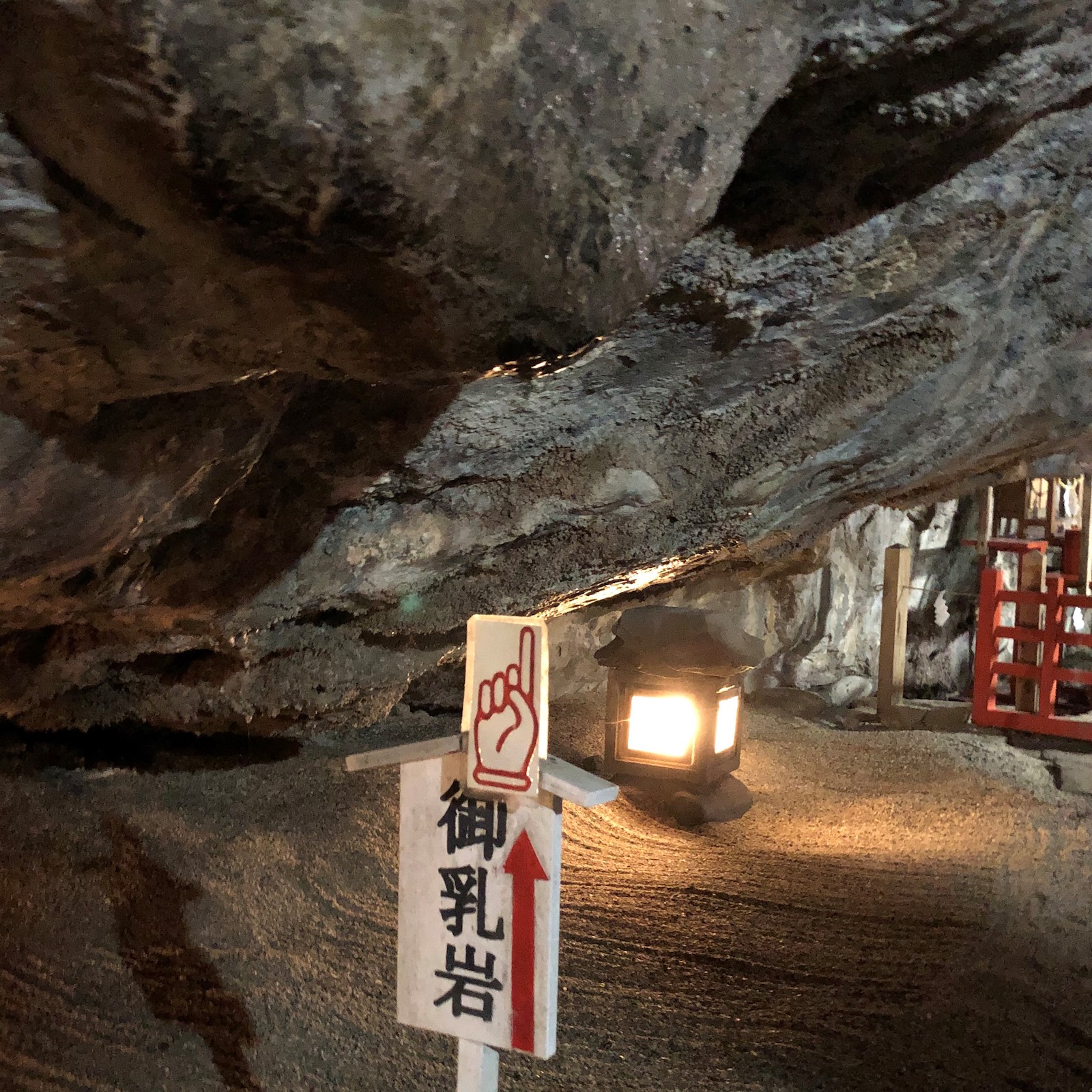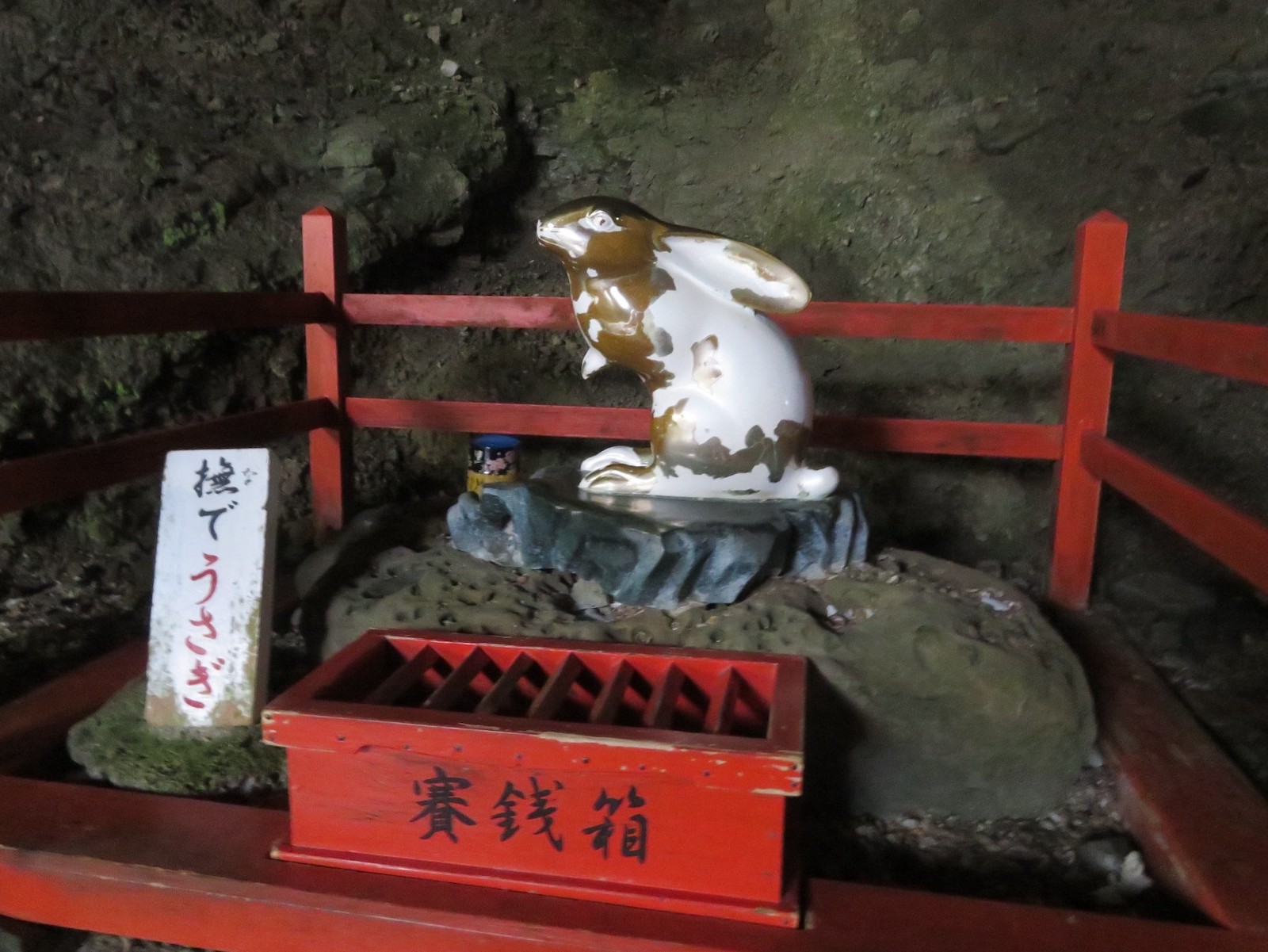There are many reasons to visit Japan’s shrines. They are, of course, religious sites, often dedicated to particular guardian gods or to receiving prayers for particular purposes. The shrine structures themselves are often of architectural interest and many are located on sites of great natural beauty, often selected based on principles of geomancy. The most ancient of shrines are also often associated with particular events in Japan’s history.
Udo Shrine, on the coast of Miyazaki south of Aoshima, ticks all of those boxes.

The shrine is the setting for one of Japan’s origin myths, the birth of Ugayafukiaezu, father of Japan’s mythical first emperor, Jimmu (711BC-585BC). As such, it is particularly associated with safe birth and healthy children. The shrine is also associated with protecting sailors and those who work on the water, but that is more likely related to its seaside location than its legendary origins.
The legend of Ugayafukiaezu’s birth is particularly interesting. His father was Hoori, also known as Yamasachi-hiko, a god of hunting. One day, Hoori and his brother Hoderi, also known as Umisachi-hiko, a god of fishing, decided to temporarily swap roles. Hoori, unfamiliar with fishing techniques, managed to lose his brother’s most prized fishhook. Vowing to retrieve it for his brother, Hoori plunged into the sea, where he found the world of Ryujin, the dragon-like god of the sea. He soon fell in love with Ryujin’s beautiful daughter, Princess Toyotama.
In his ardor, Hoori briefly forgot his earthly home, and the couple lived happily in an undersea palace. Eventually, though, Hoori became homesick, so he and the now-pregnant Toyotama returned to Kyushu. When the time came to give birth, Toyotama found a cave in a seaside cliff on the southeast coast of Miyazaki and began to build a "birthing hut" of cormorant feathers inside. As a creature of the sea, Toyotama would have to assume her true form (a kind of cross between a dragon and a crocodile) while giving birth, something she did not want Hoori to see. So she made him promise that he would not peek at her while she was giving birth. Alas, Hoori broke his promise. When Toyotama realized, she fled back to the sea in shame, leaving her newborn son, Ugayafukiaezu, in the cave. (For what it’s worth, the name Ugayafukiaezu roughly translates to “broken promise of cormorant feathers and thatch”.)
Udo Shrine is built inside that cave, a unique and fascinating location.

The cave is in a rocky cliff, about three stories above the jagged Nichinan coast. It is accessed by stairs leading down about three stories from the rest of the shrine grounds above. (There is no special access for mobility impaired visitors.) The cave is dominated by the ornately decorated red lacquer shrine building, but it is large enough to hold a number of smaller shrines as well. Visitors can walk all the way around the main shrine building to get a feel for the size of the cave.
Don’t miss a distinctive rock formation at the back of the cave, also associated with Ugayafukiaezu’s first days. According to the legend, when Toyotama fled back to the sea, leaving her new-born son behind, she caused milk to flow from two breast-shaped rocks at the back of the cave to provide her baby with sustaining nourishment. Those rock formations, from which milky-colored, mineral-laden water does drop occasionally, are signposted deep in the cave.

A popular activity while at Udo Shrine is to try to throw a marble-sized ceramic ball on which is stamped the Japanese character for luck into a rope ring arranged on a boulder on the cliff below the cave. Five tries for 100 yen. Men throw with the left hand and women with the right. If the ball stays inside the ring, the thrower's prayer/wish will be granted.

The boulder resembles a turtle shell, which is significant because Toyotama is sometimes conflated with Otohime, a princess who appears in the Japanese folktale of Urashima Taro, a story that contains features similar to those of Rip Van Winkle and Pandora's Box. Urashima Taro was a fisherman who rescued and released a turtle that was being teased by some children on the beach. The grateful turtle offered to take Urashima Taro to the famous underwater Dragon Palace, where he met Otohime. When Urashima Taro became homesick and wanted to leave the Dragon Palace, Otohime gave him a mysterious box which he was told never to open. Although Urashima Taro had only been a few days in the Dragon Palace, when he returned home, years had passed and nothing was familiar. In frustration, he pried open the mystery box and in a puff of smoke was turned into an old man.
Another curious feature of the shrine is the popularity of rabbit images. A helpful shrine priest suggested to me that it may be because the Japanese word for rabbit begins with the same "u" sound as the Japanese word for cormorant, which forms part of the name of the shrine. That wordplay is perhaps combined with the fact that rabbits are a symbol of fertility, in keeping with the popularity of the shrine as a place to pray for healthy children.

Udo Shrine is most easily accessed from Miyazaki city by private car, and there is also bus service (about 70 minutes) from central Miyazaki as well as from Miyazaki Airport. The bus stops at Aoshima, making it easy to combine the two destinations in a single trip.
Vicki L Beyer, a regular Japan Today contributor, is a freelance travel writer who also blogs about experiencing Japan. Follow her blog at jigsaw-japan.com.
© Japan Today Take our user survey and make your voice heard.
Take our user survey and make your voice heard.















3 Comments
Login to comment
Kyakusenbi_Arimasu
We are going. We love rabbits.
Laguna
Fabulous article, and great thanks to the author. My only additional suggestion would be to bring your swim fins (pros only: the currents can be treacherous.)
blvtzpk
Just like Lennie in Of Mice and Men!